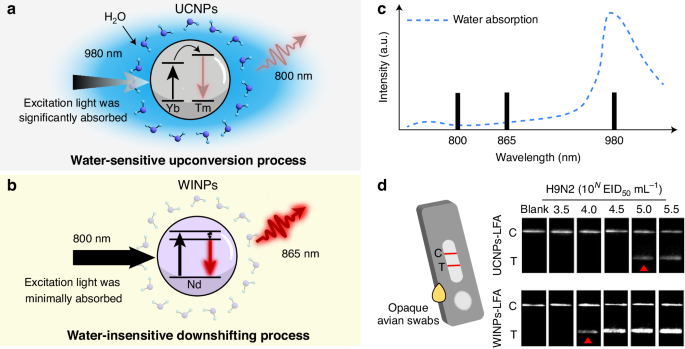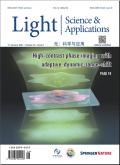Water-insensitive down-shifting nanoparticles for sensitive biosensing
IF 23.4
Q1 OPTICS
引用次数: 0
Abstract
Conventional optical probes suffer from signal degradation in aqueous media, hindering sensitive biodetection. To overcome this, newly developed water-insensitive down-shifting nanoparticles (WINPs) possess superior photophysical properties in the NIR-I window, including high quantum yield and negligible thermal effects, permitting stable, high-contrast signal generation under low excitation power. This advantage facilitated a low-power lateral flow assay capable of highly sensitive avian influenza virus (AIV) detection in the opaque biological matrices (such as avian swabs), mitigating interference issues relying on visible-range signals.

用于敏感生物传感的水不敏感下移纳米颗粒
传统的光学探针在水介质中存在信号退化的问题,阻碍了灵敏的生物检测。为了克服这个问题,新开发的水不敏感下移纳米颗粒(WINPs)在NIR-I窗口中具有优越的光物理性质,包括高量子产率和可忽略的热效应,允许在低激发功率下产生稳定的高对比度信号。这一优势有助于在不透明的生物基质(如禽类拭子)中进行高灵敏度禽流感病毒(AIV)检测的低功率侧流试验,减轻了依赖于可见范围信号的干扰问题。
本文章由计算机程序翻译,如有差异,请以英文原文为准。
求助全文
约1分钟内获得全文
求助全文
来源期刊

Light-Science & Applications
数理科学, 物理学I, 光学, 凝聚态物性 II :电子结构、电学、磁学和光学性质, 无机非金属材料, 无机非金属类光电信息与功能材料, 工程与材料, 信息科学, 光学和光电子学, 光学和光电子材料, 非线性光学与量子光学
自引率
0.00%
发文量
803
审稿时长
2.1 months
 求助内容:
求助内容: 应助结果提醒方式:
应助结果提醒方式:


